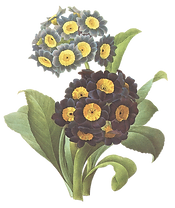Observational Poetry
- Lauren Vines
- Apr 1, 2020
- 4 min read
The Gift
Growing up, I thought poetry had to be something totally abstract and weird to make any sense. I would often just make up lines and hope for the best - no real meaning behind them. While reading Awakening the Heart by Georgia Heard (a genius, by the way), I felt such an enlightenment in my poetic mind - like a dusty chamber had been discovered and opened, freeing a new passion.
Observational poetry? Never heard of it. Until now. The power of observations - endless! While deciding on what I would write my own observational poetry about, I was drawn to the memory behind my chosen object that the actual object. When I make observations about my treasured Tiger shell, I think about how I found it and what makes it so special to me. For me, tying a memory to my observations is what birthed my poem "The Gift."
When I was a young girl, my family and I were on vacation at Emerald Isle Beach. One night, the most horrific storm came. The house we were staying in was high off the ground, supported by a few brown beams. During the storm, it swayed back and forth all night long; I was sure it was going to just fly away at any moment. The shutters were banging ferociously outside my window, and eventually did fly off somewhere. I was scared to death. Lightening was flashing, thunder was rolling, the whole package. It felt like a crazy party and I was the one who shouldn't be there. The next morning, the sun was shining bright and the new day brought great promises with it. We headed out on the beach because my mom said storms aways wash the best shells on shore. And what do you know? She was right! Shells were everywhere! I felt like a kid in a toy store.
Right in the middle of some of the broken stuff and trash was the most perfect little Tiger shell. No scratches and no chips - it was beautiful. I had talked about wanting to find a Tiger shell for years, every since we started vacationing at the beach. I had always thought they were so special. When I found that shell, I felt like it was a gift from God, reminding me that even through life's storms, He brings good things out of it. I was so scared that night, but little did I know God had something special waiting for me the next morning.
My Poem - The Gift

Implications for Students in the Classroom
When teaching students to write poetry, it's important for them to have practice. The term observational poetry might seem intimidating to some students. Start students off by giving them practice with specific strategies that help them create their own observation poetry.
In Awakening the Heart, Heard lists strategies that help students write this kind of poetry. She encouraged students to choose an object from nature and pointed out that this object should carefully selected and should evoke a sense of wonder, beauty, or amazement. She also states that this object should have a story or memory tied to it. For my poem, my object was tied to a memory. Which brings me to say...
Share your model with students! They cannot be expected to write something without a good mentor text. Not only do students need to see what you have written, but what other great poets have written also. A great mentor text for students with observational poetry is Forest Has a Song by Amy Ludwig VanderWater. It is filled with poems about objects found in nature as well as animals. Another great resource for accessing observational poetry is Amy Ludwig VanderWater's website The Poem Farm. Here is a link for her own observational drawings and poetry as well as links to other great mentor texts for observational poetry: http://www.poemfarm.amylv.com/2013/04/drawing-into-poems-april-2013-project.html.
After students have had access to mentor texts and drawings, they need time for their own practice. Have students choose an object from nature and draw a sketch of it. Remind them that it does not have to perfect. Encourage students to jot down what they notice as they draw, maybe something they wouldn't have noticed by just looking at the object. Does it make them think of something else? Does it bring back a memory?
One strategy Heard mentions in Chapter 5 is called the "Earth to Heaven" chart. With this strategy, students start with the name of their object (ex: Tiger shell), and then make an "earth" column and a "heaven" column. Under "earth" they would write vague describing words for their object (ex: hard, spotted, smooth, etc.). Under "heaven" they would write poetic lines transformed from the words under the "earth" column (ex: Strong and sturdy, it's back spotted with a starry pattern - the Tiger shell waits beneath its burrow, waiting to pounce with ease - smooth).
For first-grade students, I think I would have them close their eyes and look closely at the picture in their minds when they think of their chosen object. I would then have them look again at their drawing, and see what they can jot down. Does it remind them of something they have experienced? What about the color of the object? What does it remind them of? Etc.






Comments